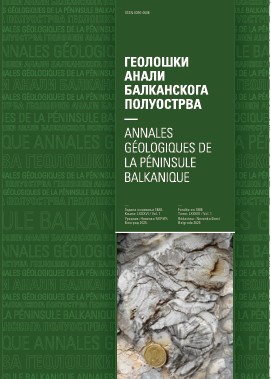Middle Miocene (Badenian) tusk shells (Scaphopoda) of the Višnjica site near Belgrade (Serbia)
Abstract
Abstract. We re-examined scaphopods fauna collected from Middle Miocene (Badenian) deposits in Višnjica locality near Belgrade (Serbia). The present study has demonstrated that Badenian deposits of Višnjica contain a diverse scaphopod fauna. The study of about 300 specimens has revealed the presence of ten species of Scaphopoda; the other two taxa were identified generically. Twelve taxa of Scaphopoda in seven genera (in both orders, Dentaliida da Costa, 1778 and Gadilida Starobogatov, 1974) are described: Fissidentalium badense (Partsch in Hörnes, 1856), Antalis cf. taurocostatum (Sacco, 1897), Antalis mutabilis (Hörnes 1856 ex Doderlein ms), Antalis cf. subprismaticum (Baluk, 1972), Antalis sp., Paradentalium sexangulum (Gmelin, 1790), Paradentalium michelottii (Hörnes, 1856), Dentalium sp., Omniglypta jani (Hoernes, 1856), Omniglypta emersoni (Caprotti, 1979), Gadilina taurogracilis Sacco, 1897, Pulsellum miocaenicum (Boettger, 1901). Representatives of the order Dentaliida Da A Costa, 1778, predominate. Among the identified species, Fissidentalium badense (Partsch in Hörnes, 1856) was the most common in the investigated material and comprised 40% of the total specimens collected. The order Gadilida is represented only by Pulsellum miocaenicum (Boettger, 1901).
Copyright (c) 2021 Geološki anali Balkanskoga poluostrva

This work is licensed under a Creative Commons Attribution 4.0 International License.










